Hard disk drive electronics from 40MB to 10TB
As part of the device interiors section in this material you will find pictures of the electronics boards of several hard drives, we will see how HDD electronics have changed over the years.
The first board is from a disk with a capacity of 40MB .
Many discrete elements can be seen.
1) parallel interface circuit
2) RAM -. SRAM 32k 8b
3) ROM
4) "power" circuit to control the platter motor
5) "power" circuit to control the heads
On the other side of the board you will find no electronic components, only the contact fields for the platter motor and the contacts for controlling the head arm and communicating with the head. This is how it will look like for all other disks.
Data is stored on one platter by two heads.
In the Ultra ATA drive 4GB a greater degree of integration can be seen, such drives used to achieve transfers in the order of 4MB/s which is nowadays a bandwidth often less than the speed of an internet connection...
1) interface circuitry and arguably the drive control
2) RAM - SRAM 64K x 16b
3) ROM
The rest of the circuitry is the control of the motor and head arm and the processing and generation of signals for the heads.
Two platters and four heads.
W 40GB drive with ATA133 interface we see a further increase in the scale of integration. Such drives provided transfers up to 10x faster than the 4GB predecessor.
1) interface chip and disk controller
2) RAM - SDRAM 512k x16b
3) power chip
One platter two heads.
One disc.
Disk 80GB changed to serial SATA interface.
1) interface circuit
2) disk controller
3) RAM - SDRAM 1M x 16b x 4 banks
4) 'power' circuit.
One plate and two heads.
.
Drive 80GB Newer generation SATA, further scale-up of integration is evident. Gone is the separate interface chip, now the disk controller chip is connected to the SATA interface. In this version, the electronics have moved to the side where the contact fields for the platter drive and head arm and the signals for the heads are located.
1) controller
2) RAM - SDRAM 1M x16b x4 banks
3) 'power' circuit
One platter and one head.
Disc. 10TB a drastic reduction in the size of the electronics board can be seen.
Why are there still 3 main circuits on the PCB?
I suspect, that the "power" chip is made in a different process/lithography than the disk controller, as is the RAM, and it still pays to put two separate chips. RAM in a separate module is perhaps an easy production model with a different amount of cache?
Today most of the media we use do not contain spinning platters, HDD are displaced by FLASH memory.
Have you come across any interesting media designs
or any design details of interest to you in the pictures in this material?
If you prefer footage, below are attempts to identify the circuits used in the first of the 40MB HDDs:
And the operation of the newer HDD with SATA interface:
The helium-filled drives are sealed like a can of canned food
The first board is from a disk with a capacity of 40MB .
Many discrete elements can be seen.
1) parallel interface circuit
2) RAM -. SRAM 32k 8b
3) ROM
4) "power" circuit to control the platter motor
5) "power" circuit to control the heads
On the other side of the board you will find no electronic components, only the contact fields for the platter motor and the contacts for controlling the head arm and communicating with the head. This is how it will look like for all other disks.
Data is stored on one platter by two heads.
In the Ultra ATA drive 4GB a greater degree of integration can be seen, such drives used to achieve transfers in the order of 4MB/s which is nowadays a bandwidth often less than the speed of an internet connection...
1) interface circuitry and arguably the drive control
2) RAM - SRAM 64K x 16b
3) ROM
The rest of the circuitry is the control of the motor and head arm and the processing and generation of signals for the heads.
Two platters and four heads.
W 40GB drive with ATA133 interface we see a further increase in the scale of integration. Such drives provided transfers up to 10x faster than the 4GB predecessor.
1) interface chip and disk controller
2) RAM - SDRAM 512k x16b
3) power chip
One platter two heads.
One disc.
Disk 80GB changed to serial SATA interface.
1) interface circuit
2) disk controller
3) RAM - SDRAM 1M x 16b x 4 banks
4) 'power' circuit.
One plate and two heads.
.
Drive 80GB Newer generation SATA, further scale-up of integration is evident. Gone is the separate interface chip, now the disk controller chip is connected to the SATA interface. In this version, the electronics have moved to the side where the contact fields for the platter drive and head arm and the signals for the heads are located.
1) controller
2) RAM - SDRAM 1M x16b x4 banks
3) 'power' circuit
One platter and one head.
Disc. 10TB a drastic reduction in the size of the electronics board can be seen.
Why are there still 3 main circuits on the PCB?
I suspect, that the "power" chip is made in a different process/lithography than the disk controller, as is the RAM, and it still pays to put two separate chips. RAM in a separate module is perhaps an easy production model with a different amount of cache?
Today most of the media we use do not contain spinning platters, HDD are displaced by FLASH memory.
Have you come across any interesting media designs
or any design details of interest to you in the pictures in this material?
If you prefer footage, below are attempts to identify the circuits used in the first of the 40MB HDDs:
And the operation of the newer HDD with SATA interface:
The helium-filled drives are sealed like a can of canned food





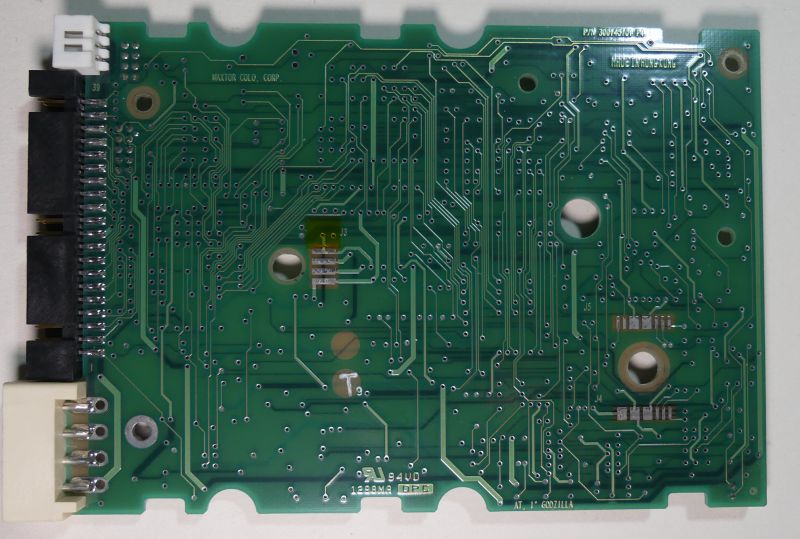
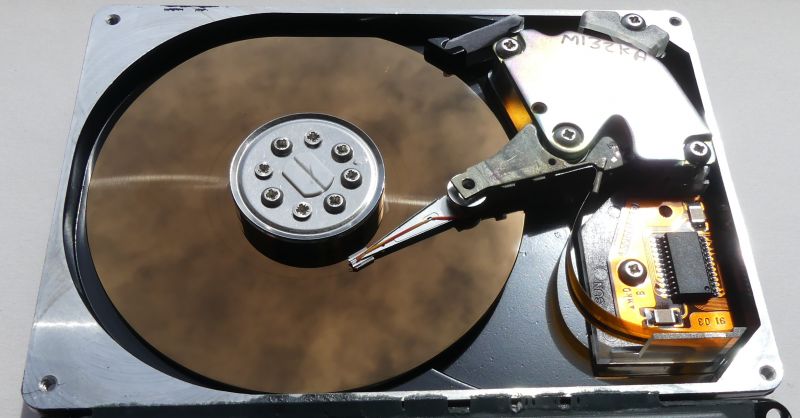
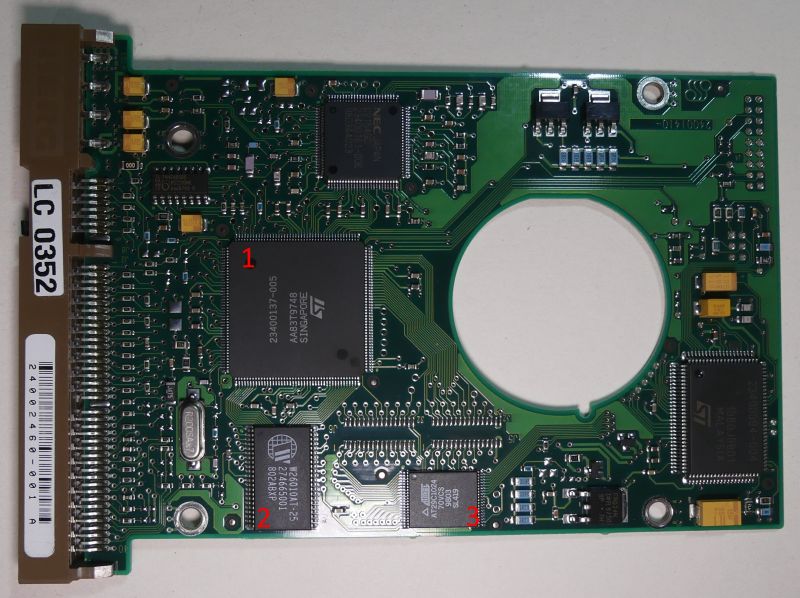



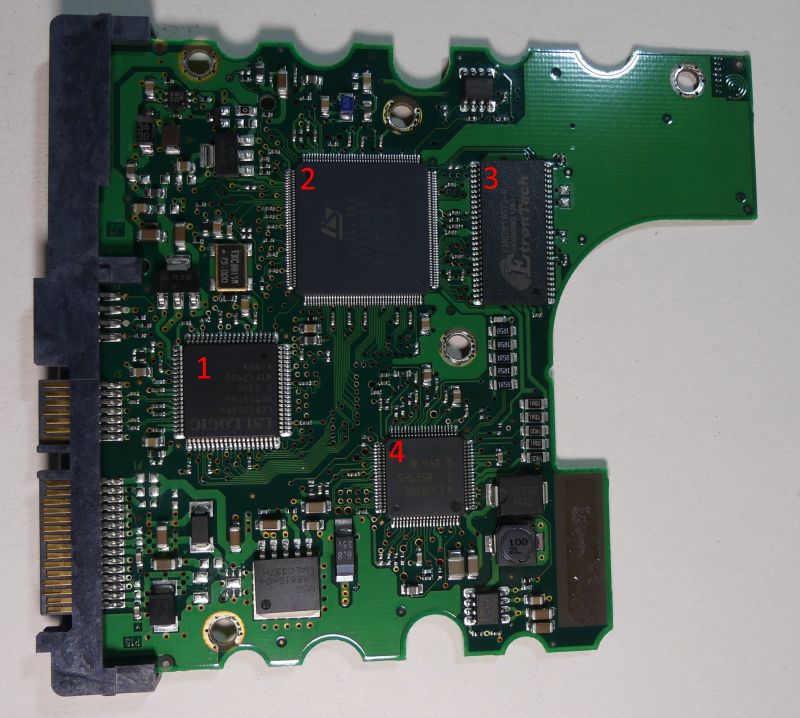
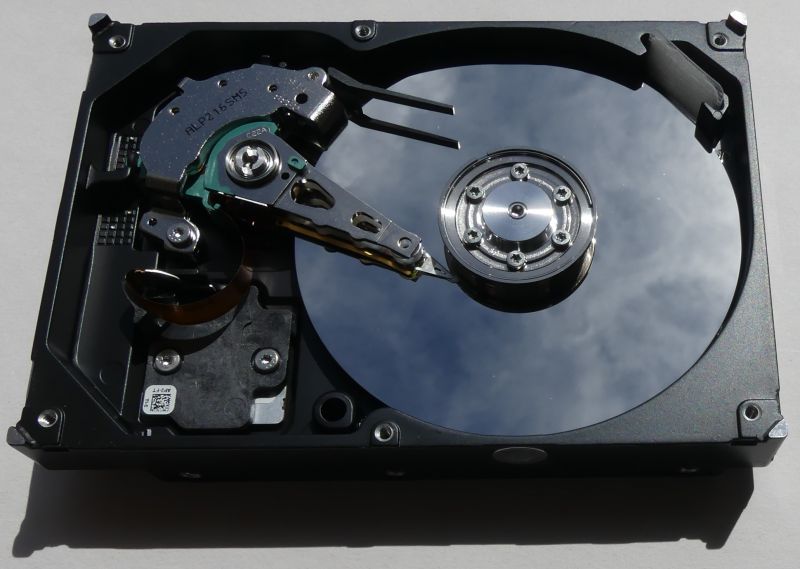

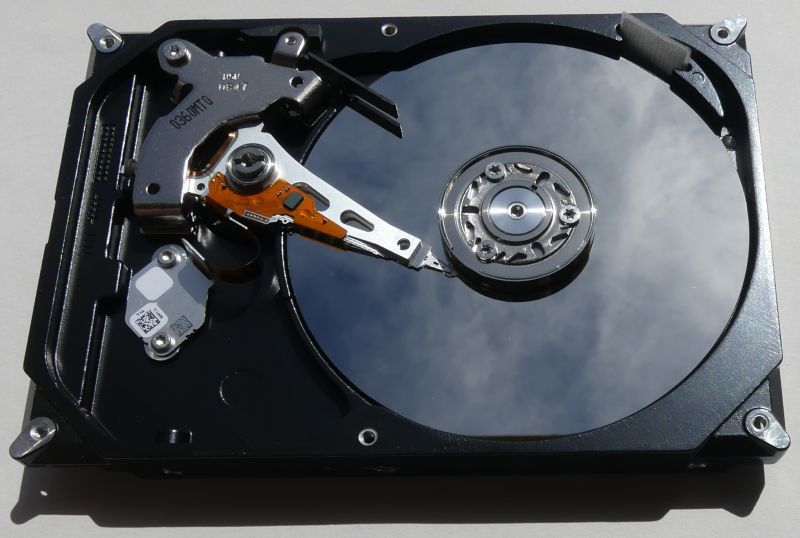
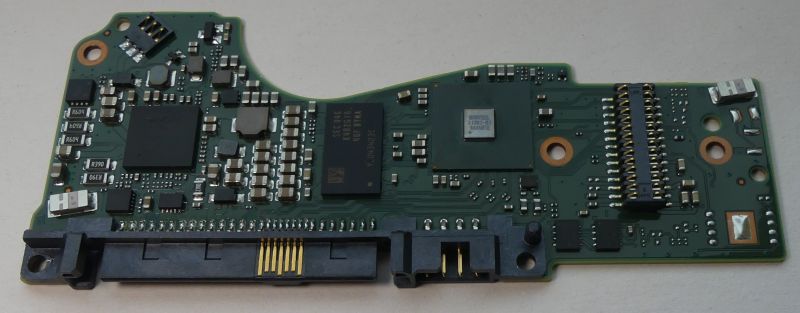
Comments
Yes: DVD-RAM. [Read more]
It may not be shown, but in my opinion, one thing hasn't changed: Every disk, different electronics. In the case of a working device, it doesn't matter much, but in the case of a hardware fault, this is... [Read more]
I also see a low noise LM358 on the first board. My guess is that it amplified the head read signal. There is also an LM324, surely it amplifies something, maybe it even generates the pad current.... [Read more]
And interestingly - after 20 years it is still functional - it is possible to read files from it, freely delete and write. I have such a disc, which in my high school days was used as a "memory stick",... [Read more]
In the years of my first contact with PCs on the hardware side, I got my hands on a few MFM disks where the head drive was a simple stepper motor. The disks were produced by IBM and had a "staggering"... [Read more]
Good point, the 358 hums low, but it is slow. The question is whether it is too slow on archaic 40MB disk electronics, where the read speed was in kB/s, i.e. the stream from the head did not exceed a few... [Read more]
I remember disks that had a knob on the outside connected to the head drive. When the drive was running, it was spinning amusingly :) I think I also remember drive electronics that had two(?) Z80s in... [Read more]
And I have a working 40MB conner drive. It sits in a working 486 40MHz and it barely works. Before ATA, SATA interfaces there were other weird and incompatible interfaces and also some of the control electronics... [Read more]
- PCB interchangeability is much greater than head interchangeability. - not true - PCBs from other related models often fit, and if the PCBs are not interchangeable (e.g. have a different signal processor... [Read more]
Separating the hard disk from the controller were, for example, the ST225 https://www.os2museum.com/wp/seagate-st-225-just-wow/ with interfaces like the ST-506 MFM https://en.wikipedia.org/wiki/ST506/ST412.... [Read more]
I have also seen magneto-optical disks and so-called ZIP drives. [Read more]
DVD-RAM discs came in a cartridge version, requiring dedicated drives. Later they were as loose discs, and could be handled by ordinary DVD recorders. An example of a magneto-optical disc would be... [Read more]
In Amiga it was used (Amiga VBS). Such a cassette held between 340 and 520MB of data, which for the second half of the 20th century was not a bad value, especially as cassettes were widely available. [Read more]
And then there were dedicated devices for backing up data on magnetic tape called Streamers. I even repaired a few back in the old days. Mainly banks used them. [Read more]
- they still do. [Read more]
And I have an HP streamer on USB and some cassettes physically probably even identical to DAT, but with what to bite it...? Because ZIP floppy disks (like DVD-RAM) are handled like regular removable d... [Read more]
This surprised me. I was sure these devices were already extinct. But since they haven't, that can only mean one thing - they are reliable and the carrier is long-lived. [Read more]
They use a library with LTO3, LTO4 tapes. Copying drags on mercilessly, especially on old disk arrays crammed with millions of files. [Read more]
Maybe Unix/Linux and the tar command. Generally this command originates from the days of such tape memories with 1/2" tapes on spools much larger than in amateur reel-to-reel tape recorders. [Read more]